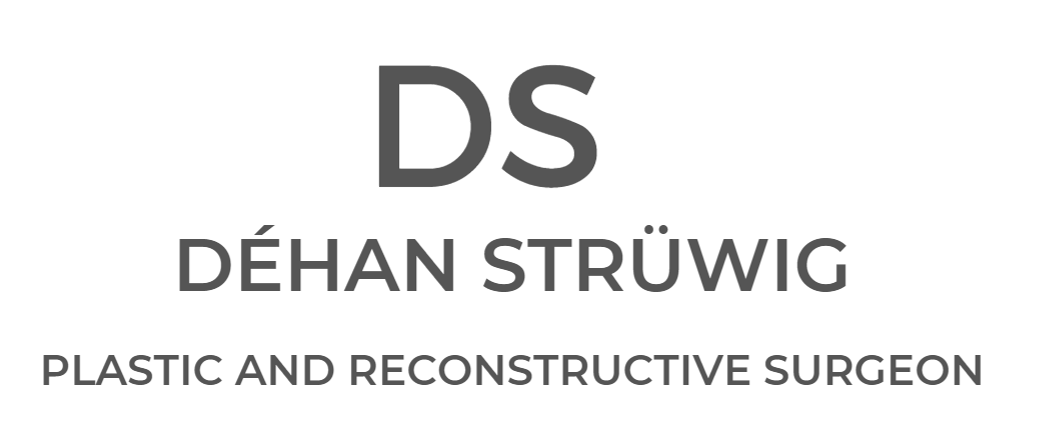As a plastic and reconstructive surgeon, I am particularly blessed because I have a fascinating and diverse field of study. I can operate on any part of the anatomy. My work is not only dedicated to cosmetic surgery, as many patients think, but I also perform reconstructive surgery. In addition to that, I perform non-surgical cosmetic surgery procedures. Plastic surgery is the field of medicine that probably shows the most promise for pushing boundaries and developing new frontiers, with the development of nano-technology, skin substitutes, 3D printing, and more.
Many people ask me why I still do trauma work. One of the main reasons is the challenging reconstructive opportunities it offers me. These reconstructive surgeries ensure that I improve and enhance my skills in all my other surgical procedures.
Since replanting my first hand while in medical school, I have been fascinated with hand surgery. I managed to rotate in the hand surgery department at UCT while specializing as a plastic surgeon. Therefore, I regularly perform hand surgery, especially for traumatic hand injuries. In my everyday practice, I also perform other hand surgery procedures, such as releasing Dupuytren’s contracture and repairing syndactyly.
Cosmetic surgery is every plastic surgeon’s goal. And the more experienced one is and the more surgeries one performs, the better one becomes. One learns with each patient and strives to be better with the next – never quite reaching perfection.
I love the art of facial rejuvenation, which includes facelifts, facial fat grafting, eyelid surgery, neck liposuction and neck lift surgery, and many non-surgical options such as Botox and dermal fillers. Restoring the damage that the elements, life experiences, and life has wrought on faces while ensuring that the patient looks natural and not operated on or treated is my life goal. I just love it when my patients report that their friends thought they looked fantastic after a facial procedure but couldn’t figure out what they had done. This is the perfection I strive for.
Many patients are surprised to arrive in my waiting room to find it filled with children – thinking they have accidentally walked into a pediatrician’s office. Small children inevitably become my patients mainly because of traumatic events, such as slamming a finger in a door, falling off the jungle gym, or (the only surgery I do not enjoy) sustaining an accidental burn. My Winnie-the-Pooh tie is specially worn for these follow up visits, and I enjoy making all my children giggle and laugh during their visits to the practice.
I also operate on young children with prominent ears – and those born without part of or without an ear. These are patients suffering from a condition called microtia. This is my super-specialist “hobby,” and my family and I spent six months in France while I completed a fellowship to learn the finer skills of performing this reconstructive surgery.
Breasts are my favorite (aren’t they any man’s?). One of the most soul-satisfying surgeries is performing reconstructive surgery for a woman with breast cancer. It certainly isn’t easy, but becoming part of the journey and assisting her in regaining some form of femininity is exceptionally gratifying. I also often perform fat grafting to the breasts to soften the extremely hard tissue that has resulted from radiation therapy after breast cancer surgery before I embark on the reconstructive process.
Breasts come in all shapes and sizes, and women cannot always choose how big, small, or saggy their breasts are – genetics, congenital diseases, and childbirth all play a role. To reshape a sagging breast, reduce a large breast, or give a young woman dignity by enlarging her almost non- existent breasts are unique gifts I can share with my female patients.
Restoring a male breast to its normal shape by removing excess breast tissue, restoring manliness, and reconstructing a condition called gynecomastia is life-changing to most males.
I perform body shaping procedures – usually after some weight loss by patients. I have never considered body shaping procedures purely cosmetic, as a significant portion of this surgery is removing excesses of unsightly skin that cannot be removed in any other way. Patients who have undergone bariatric surgery, or massive weight loss, are operated to remove the excess skin during procedures which could be a combination of a body lift, thigh lift, buttock lift or arm lift. Other patients, who have lost weight, and are left with an overhang of excess skin of the abdomen, would undergo an abdominoplasty procedure.
Liposuction is a less invasive procedure to attain body shaping – when we remove stubborn areas of excess fat which have resisted attempts at removal through exercise and diet.
Many patients have been part of my practice because of lumps and bumps, such as sebaceous cysts, lipomas, or skin cancers. I perform skin cancer surgery every week, including surgery for the less severe skin cancers, like basal cell carcinomas, and the more demanding skin cancers, like malignant melanoma.
Patients often ask me which surgeries I enjoy the most or which I am better at. You might identify several plastic and reconstructive surgery procedures that I have not mentioned here – those I do not enjoy and have therefore opted not to perform.
I approach each of my surgeries the same way – with perfection, professionalism, and enjoyment in mind – I want to meet my patients’ expectations, enrich their lives and mine, and have fun simultaneously.
This requires that I perform a wide variety of procedures, each requiring a different skill and a different experience level. I continue to learn, improve, and enhance my skills.
Performing a wide variety of procedures means that I do not get bored performing a procedure, and I never take any surgical procedure for granted or become over confident at performing the surgery.

